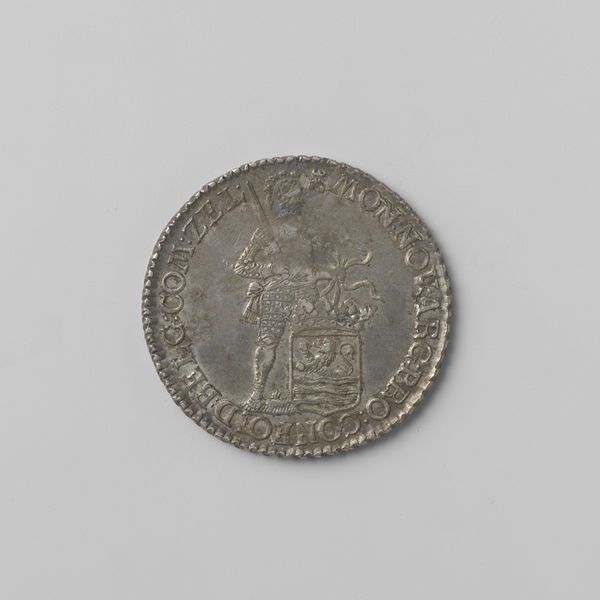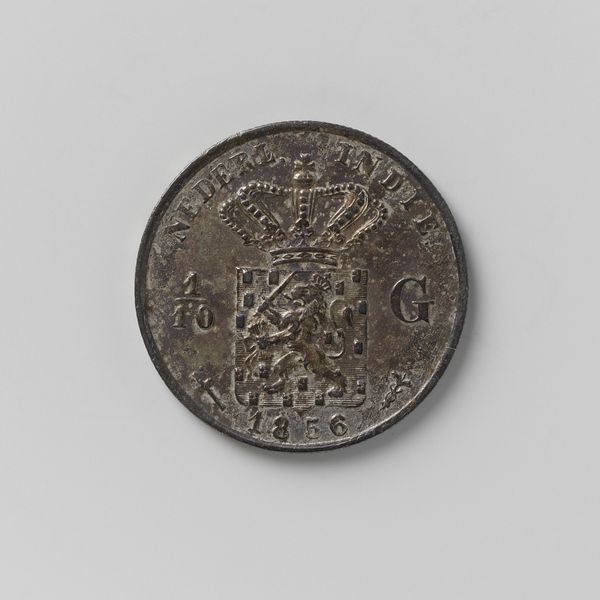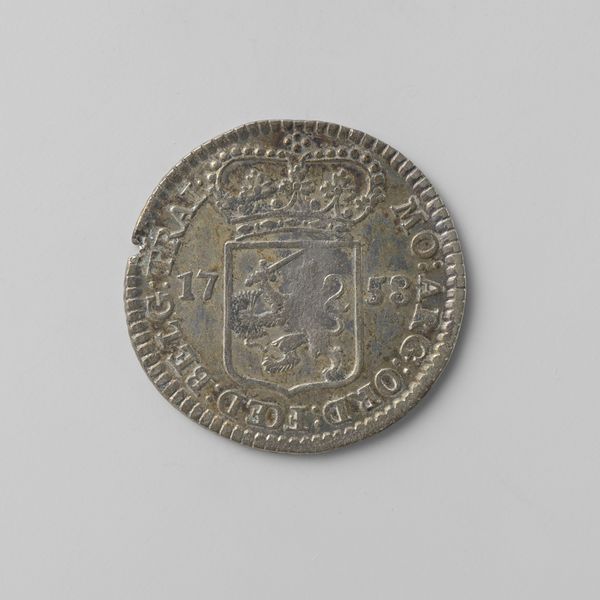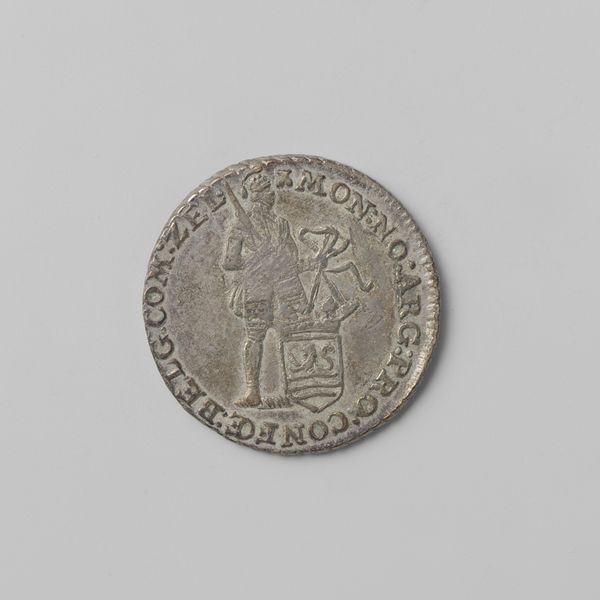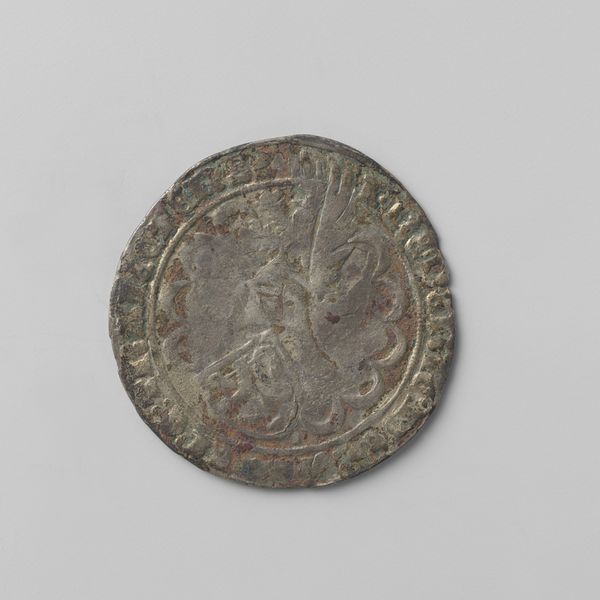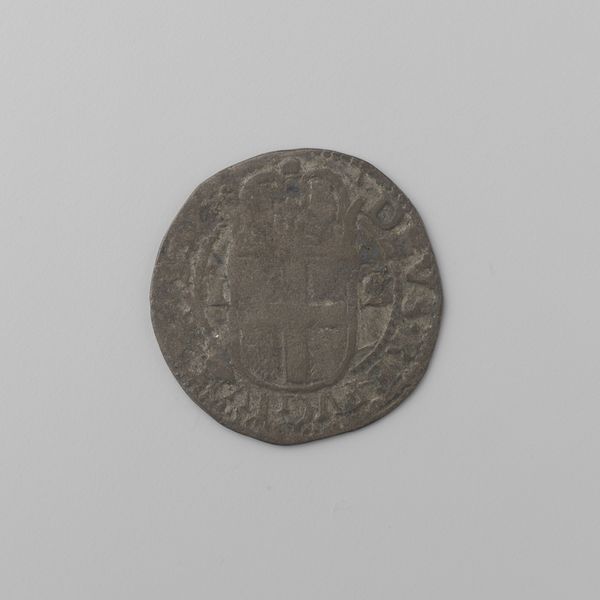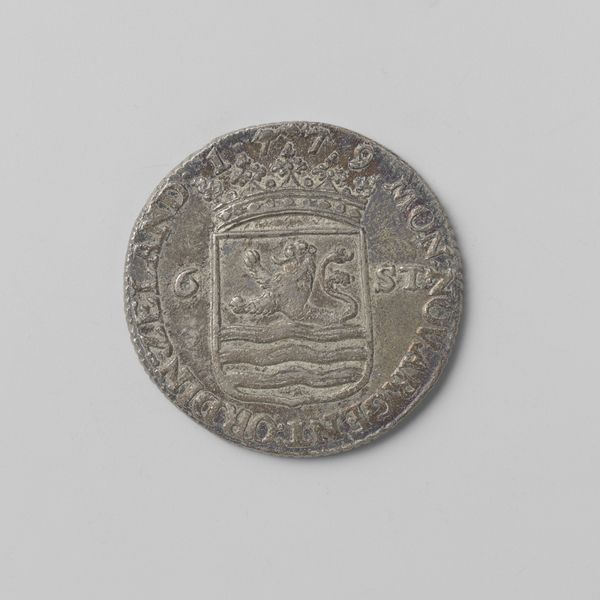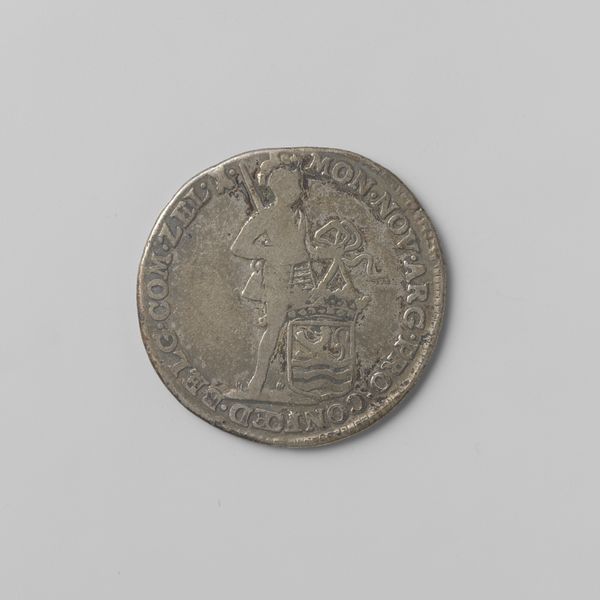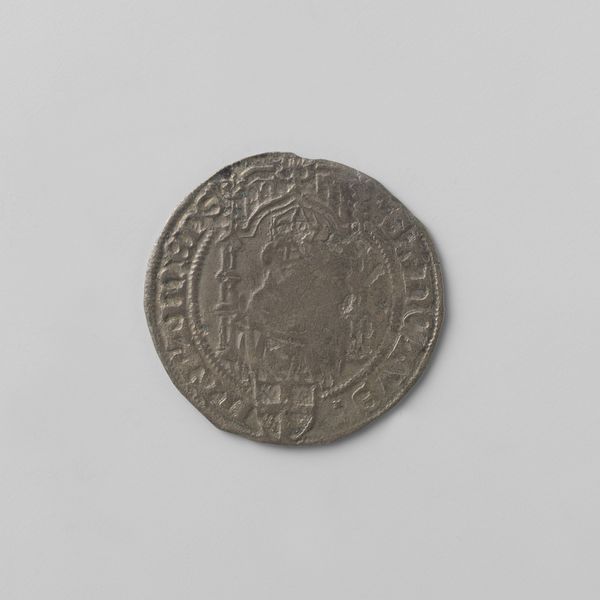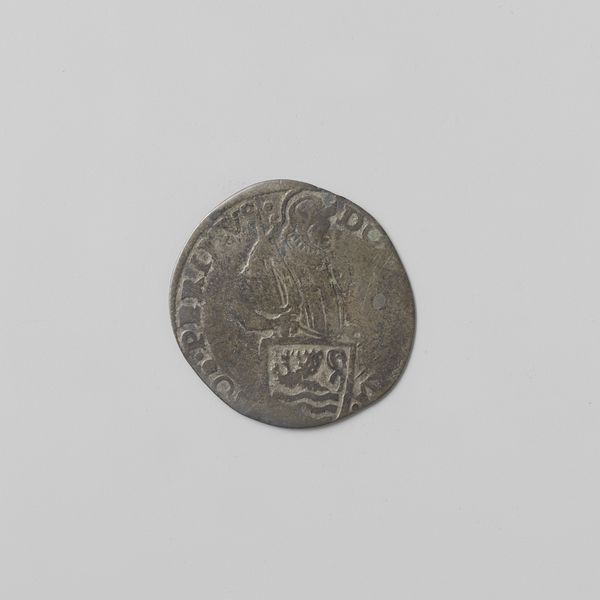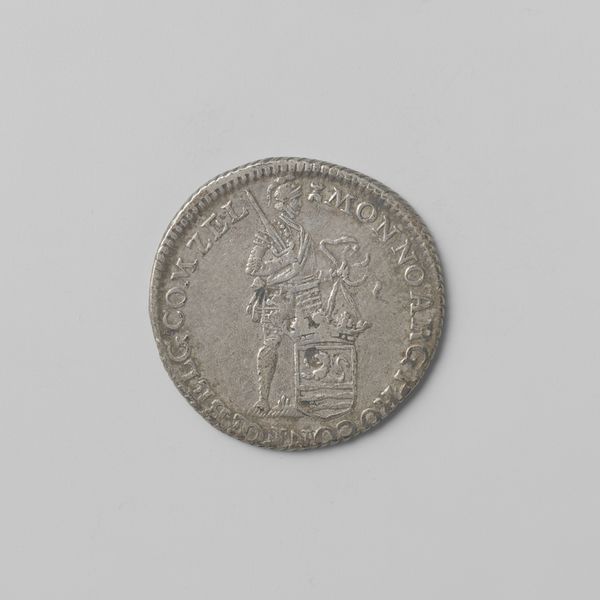
silver, print
#
portrait
#
medieval
#
silver
#
dutch-golden-age
# print
#
history-painting
Dimensions: diameter 3.4 cm, weight 13.84 gr
Copyright: Rijks Museum: Open Domain
Curator: Here we have a Zeeuwse halve silver ducat dating back to 1792. Editor: The muted sheen of the silver really sets a solemn tone. The design itself feels crowded, almost as if the imagery is straining against the coin’s circular boundary. Curator: Indeed. The figure is that of a knight, symbolizing strength and protection. Note how he stands guard next to the Zeeland coat of arms, the crowned lion emerging from the waves. The medieval iconography clearly reinforces the province's historical power. Editor: It's fascinating to think about how this coin moved through society—a physical embodiment of economic activity. The very wear and tear tells its own story about how materials were exchanged and valued. What labor was involved in minting this? Curator: Excellent point. Consider this also as a symbolic representation. Silver's enduring luster mirrors the province’s lasting prestige, while its weight denotes substantial economic strength. Coins like these boosted a region's confidence as well as individual trade. Editor: This reminds us how intrinsic design choices were. This object blends politics, economics, and art. There are human hands shaping these coins. What do you make of its production on a wider social level? Curator: Absolutely, you bring a different yet relevant dimension. This coin, although seemingly modest, links personal exchanges with large ideological forces. In the end, the material reminds one of trade and governance! Editor: Precisely, and I also now have some new questions!
Comments
No comments
Be the first to comment and join the conversation on the ultimate creative platform.
